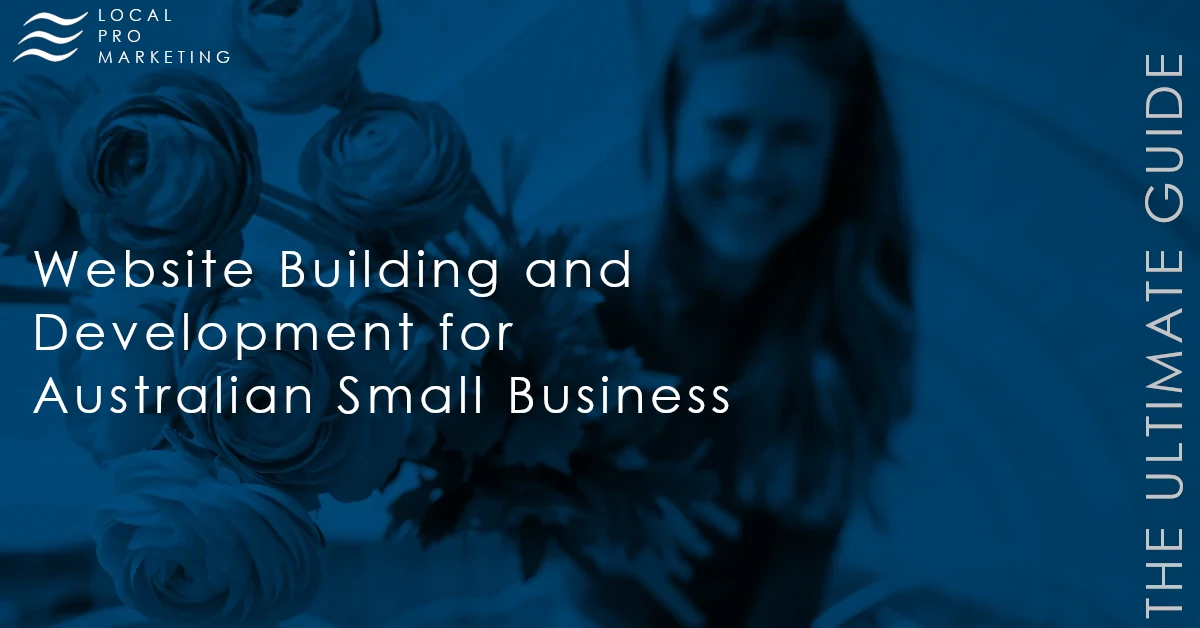If you own a small business, having a website is no longer optional. Customers expect businesses to have an online presence, and not having one can put you at a disadvantage. However, building and developing a website can be a daunting task, especially if you don’t have a technical background. That’s where this ultimate guide comes in.
In this guide, we’ll walk you through everything you need to know to build and develop a website for your small business. We’ll cover everything from planning and designing your website to promoting it and keeping it up to date. By the end of this guide, you’ll have all the knowledge you need to create a website that works for your business.

Planning Your Website
Before website building, it’s important to plan it out first. This will help you ensure that your website meets your goals and serves the needs of your target audience. Here are the steps you should take to plan your website:
Research Your Audience and Competitors
To create a website that resonates with your target audience, you need to understand their needs and preferences. Conducting market research and analyzing your competitors’ websites can help you gain insights into your target audience. Here are some questions to consider when researching your audience:
- What are their pain points, and how can your website solve them?
- What kind of content do they consume, and how do they prefer to consume it?
- What devices do they use to access the internet?
Set Website Goals
Once you have a good understanding of your target audience, you should set website goals and digital marketing strategy. Your website goals should align with your overall business goals and help you achieve them. For example, if you’re an e-commerce business, your website goals might be to increase sales and conversion rates.
Common website goals:
- Increase website traffic
- Improve search engine rankings
- Increase conversion rates
- Improve user engagement
Choose a Website Builder or Platform
Now that you have a plan for your website, it’s time to choose a website builder or platform. There are many options available, ranging from simple drag-and-drop website builders to more complex content management systems (CMS) like WordPress.
Factors to consider when choosing a website builder:
- Ease of use
- Customization options
- Price
- Support and resources available
Once you’ve chosen a website builder or platform, it’s time to move on to the next step: creating your website.

Designing Your Website
The design of your website is crucial, as it can impact the user experience and determine whether visitors stay on your site or leave. Here are some tips for designing a website that engages visitors and encourages them to take action:
Use a Responsive Design
With more and more people using mobile devices to browse the internet, it’s important that your website is designed to be responsive. A responsive design means that your website will adapt to the screen size of the device it’s being viewed on, ensuring that it looks good and functions well on all devices.
Keep it Simple and Easy to Navigate
Your website should be easy to navigate, with clear and concise menus and links that make it easy for visitors to find what they’re looking for. A cluttered or confusing website can turn visitors off, so it’s important to keep it simple and streamlined.
Use High-Quality Images and Videos
Images and videos can help make your website more engaging and visually appealing. However, it’s important to use high-quality images and videos that are relevant to your business and add value to your website.
Ensure Fast Load Times
Slow load times can frustrate visitors and cause them to leave your website. To ensure fast load times, optimize your images, use a content delivery network (CDN), and choose a website builder or platform that is optimized for speed.
Use Calls to Action (CTAs)
Calls to action (CTAs) are a critical part of any website design, as they encourage visitors to take action, such as making a purchase, filling out a form, or subscribing to a newsletter. Make sure your CTAs are clear, easy to find, and use action-oriented language.
By following these design tips, you can create a website that engages visitors and encourages them to take action. In the next section, we’ll look at how to create content for your website.

Creating Content for Your Website
The content marketing on your website is what informs and engages visitors, so it’s important to create content that is high-quality and relevant to your audience. Here are some tips for creating content for your website:
Define Your Target Audience
To create content that resonates with your audience, you need to understand who they are and what they’re looking for. Use the research you conducted earlier to define your target audience, and create content that speaks directly to them.
Use Clear and Concise Language
Your content should be easy to read and understand, with clear and concise language. Use short sentences and paragraphs, and break up your content with subheadings, bullet points, and images.
Use Keywords for SEO
Using keywords in your content can help improve your search engine rankings and make it easier for people to find your website. Do some keyword research to identify the keywords that are relevant to your business and incorporate them into your content.
Provide Value to Your Audience
Your content should provide value to your audience by answering their questions, solving their problems, or entertaining them. By providing value, you can build trust with your audience and encourage them to take action.
Use a Mix of Content Types
Using a mix of content types, such as blog posts, videos, and infographics, can help keep your website interesting and engaging. Experiment with different types of content to see what resonates with your audience.
By following these content creation tips, you can create content that engages and informs your audience, and helps you achieve your website goals. In the next section, we’ll look at how to promote your website.

Promoting Your Website
Creating a website is just the first step. To ensure that your website is successful, you need to promote it effectively. Here are some tips for promoting your website:
Use Social Media
Social media marketing is a powerful tool for promoting your website and reaching new audiences. Create social media accounts for your business on platforms like Facebook, Twitter, and Instagram, and share your website content regularly.
Invest in SEO
Search engine optimization (SEO) can help improve your website’s visibility in search engine results pages, making it easier for people to find your website. Consider investing in SEO services or learning SEO techniques yourself.
Use Paid Advertising
Paid advertising, such as Google Ads or Facebook Ads, can help you reach a wider audience and drive more traffic to your website. Consider setting up paid advertising campaigns to promote your website.
Collaborate with Other Businesses
Collaborating with other businesses in your industry can help you reach new audiences and promote your website. Consider guest blogging on other websites, collaborating on social media campaigns, or partnering on events.
Monitor Your Website Analytics
Monitoring your website analytics can help you understand how your website is performing and identify areas for improvement. Use tools like Google Analytics to track your website traffic, user behavior, and conversion rates.
By promoting your website effectively, you can reach more people and achieve your website goals. In the next section, we’ll look at how to maintain and improve your website over time.

Maintaining and Improving Your Website
Creating a website is an ongoing process. Once your website is up and running, it’s important to maintain and improve it over time. Here are some tips for maintaining and improving your website:
Update Your Content Regularly
Updating your website with fresh content can help keep your audience engaged and improve your search engine rankings. Consider adding new blog posts, videos, or images on a regular basis.
Test Your Website
Regularly testing your website can help you identify any issues or errors and ensure that it’s functioning properly. Use tools like Google’s Mobile-Friendly Test to ensure that your website is optimized for mobile devices.
Optimize for Speed
Website speed is a critical factor in user experience and search engine rankings. Use tools like Google’s PageSpeed Insights to identify areas where you can improve your website speed.
Use Security Measures
Ensuring that your website is secure is important for protecting your business and your customers. Use security measures like SSL certificates and two-factor authentication to keep your website secure.
Gather User Feedback
Gathering feedback from your website users can help you understand what’s working well and what can be improved. Use tools like surveys or feedback forms to gather user feedback and make improvements to your website.
By maintaining and improving your website over time, you can ensure that it continues to meet the needs of your audience and achieve your website goals.

Creating a website can be a daunting task, but by following the tips in this ultimate guide, you can build a website that is effective, engaging, and successful. Remember to focus on your audience, create high-quality content, promote your website effectively, and maintain and improve it over time. By doing so, you can achieve your website goals and help your business grow.
Thanks for taking the time to read this blog post on Web Design. Our team at Local Pro Marketing is committed to providing valuable insights and strategies to help businesses succeed in the ever-evolving world of paid advertising. We hope you found this post helpful and informative. Don’t hesitate to reach out to us if you have any questions or leave a comment.









